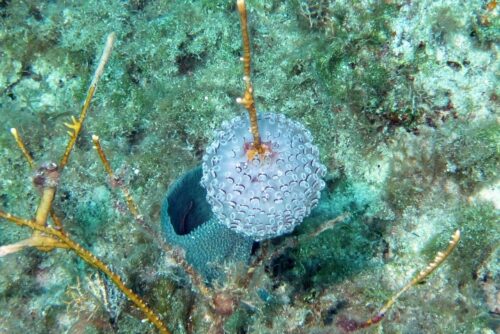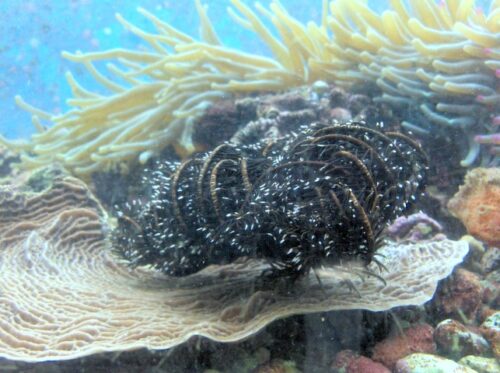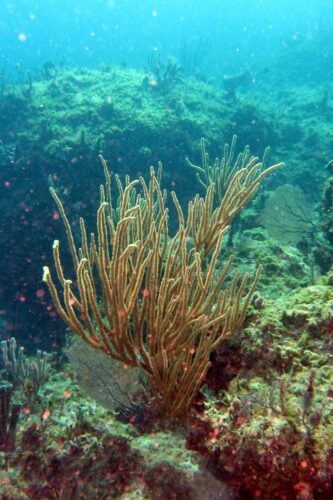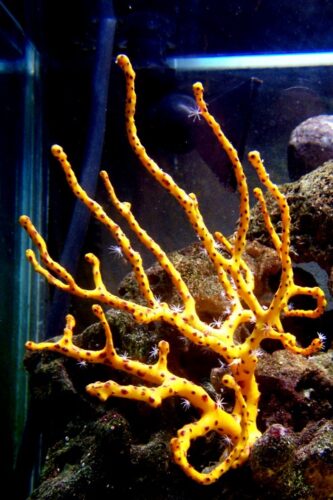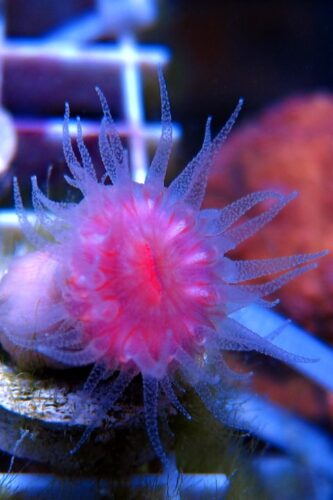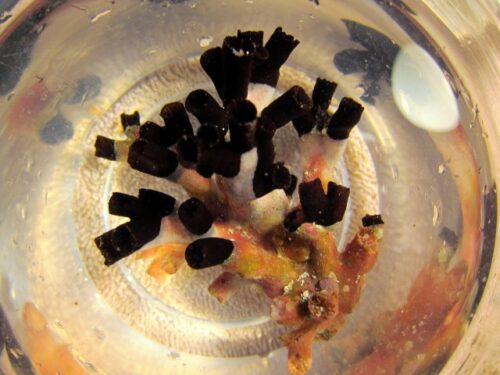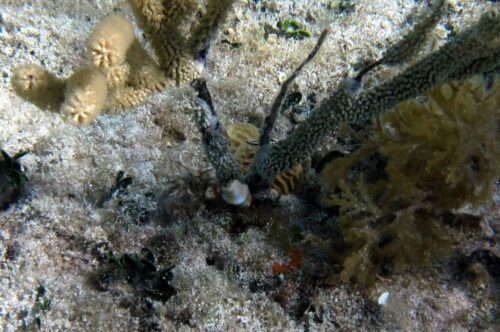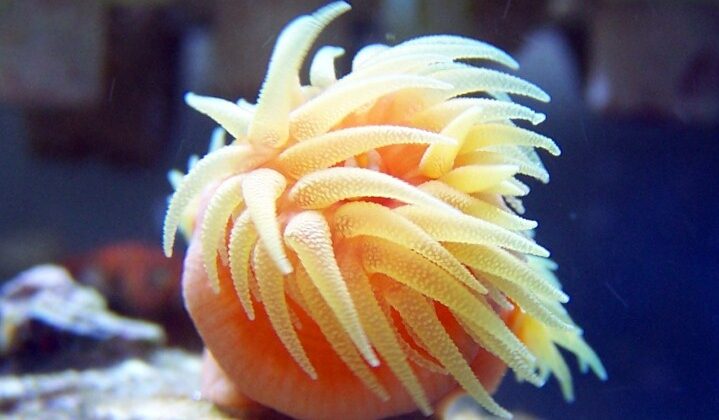
This is a guest post by Nikki of Reef’d Up Aquatics.
Ten years ago, non-photosynthetic (NPS) corals were considered nearly impossible to keep alive, much less to have them thrive. Now, there are several communities dedicated to the niche, and aquarists are able to keep other more sensitive filter-feeding organisms, such as the crinoid feather star. The vast array of colors, shapes, and requirements makes NPS corals a challenging but rewarding facet of the reefkeeping hobby.
Crinoid Feather Star in Curacao
Photosynthetic corals contain symbiotic algae, called zooxanthallae, which helps supply food to the coral through photosynthesis. NPS corals lack this algae (therefore they are sometimes referred to as “azooxanthallae corals”), so they must obtain all of their own food. Light is considered more detrimental than beneficial to NPS corals as photosynthetic organisms (algae particularly) tend to grow faster and can overgrow a NPS coral. Therefore, NPS corals in the ocean tend to grow in deeper (and darker) water where photosynthetic organisms are less likely to thrive. However, they are often found growing successfully right next to photosynthetic corals. The same goes for keeping NPS corals in captivity.
Gorgonians at ~60 feet in Bermuda. Note the lack of competing photosynthetic corals.
Food and flow needs vary greatly from one NPS coral to the next as polyp size (and thus mouth and tentacle size) depends on species. Generally, smaller-polyp NPS corals are more difficult to keep for the beginner as the correct food must be cultured. Larger-polyp NPS corals are more likely to accept a variety of food sizes, but this does not mean the food caught will provide the correct nutritional profile. Flow needs depend on the coral’s structure. Sea fans that are flat and wide have different flow requirements than the ball-shape of Tubastrea species (sun coral). Due to these varying needs, NPS corals are grouped like photosynthetic corals into small polyp NPS and large polyp NPS categories. This introduction will focus on large polyp NPS as they are a great introductory NPS coral.
Gorgonian (small polyp NPS coral) in a saltwater aquarium
Tubastrea species are frequently imported and are very forgiving to NPS newbies. Their large polyps easily capture and take in a variety of food particles, as long as other inhabitants like fish do not steal the food (the “soda bottle method” can help prevent this). In the home aquarium they will eat baby brine shrimp, cyclopeeze, Mysis, seafood slurry, and even fish pellet food. The coral can also be trained to open in daylight by feeding at the same time every day. Eventually, the coral will come to expect the food at that time. Target feeding for large polyp NPS is required about 3-5 times per week, depending on the health of the coral and maturity of the aquarium. A few aquarists have sufficient food in the aquarium’s water column that target feeding is not required, but this is more the exception rather than the norm. A sufficient food supply in the water column will quickly foul an aquarium with insufficient filtration.
Sun Coral (Tubastrea species)
Unfortunately, during import, Tubastrea are usually not fed adequately, and once they arrive at the store, their health has significantly declined. When NPS coral colonies starve, generally the tissue between polyps erodes first (as in the photo above). Eventually, the coral will not have enough energy to open regularly. At this point the coral may need the “Tupperware Method”: fill a Tupperware container with tank water and blended seafood slurry. Place the coral in this food smorgasbord and hope for the best. If the polyps extend, feed target feed them. If the coral does not respond within 30 minutes, place the coral back into the aquarium and try again later.
Other good beginner corals (albeit usually at a higher price tag) are Dendrophylllia and Balanophyllia corals. Tubastrea is undistinguishable from Dendrophyllia without examining the skeletal structure. Balanophyllia is more oval/hourglass shaped and does not live colonially like Tubastrea. (Veron, Corals of the World)
Juvenile Balanophyllia starting to develop the oval structure
Although the black sun coral is considered a large polyp NPS coral and looks very similar to the orange sun corals, it is more difficult to keep. They do “ok” for a while then slowly die. These are best left for advanced to expert aquarists.
Black sun coral slowly deteriorating
As with all new corals, all NPS corals should go through a coral dip and quarantine procedure to prevent pests. Since the world of NPS corals is relatively unexplored, the pests may not be similar to those found on photosynthetic corals (be prepared to treat for a variety of potential threats.)
Sea slug eating this Gorgonian in Bermuda
In conclusion, there are several great beginner NPS corals readily available to prepare aquarists for the realm of azooxanthallae corals and other filter-feeding organisms that waits ahead.
Tunicate (filter feeder) located in Bermuda